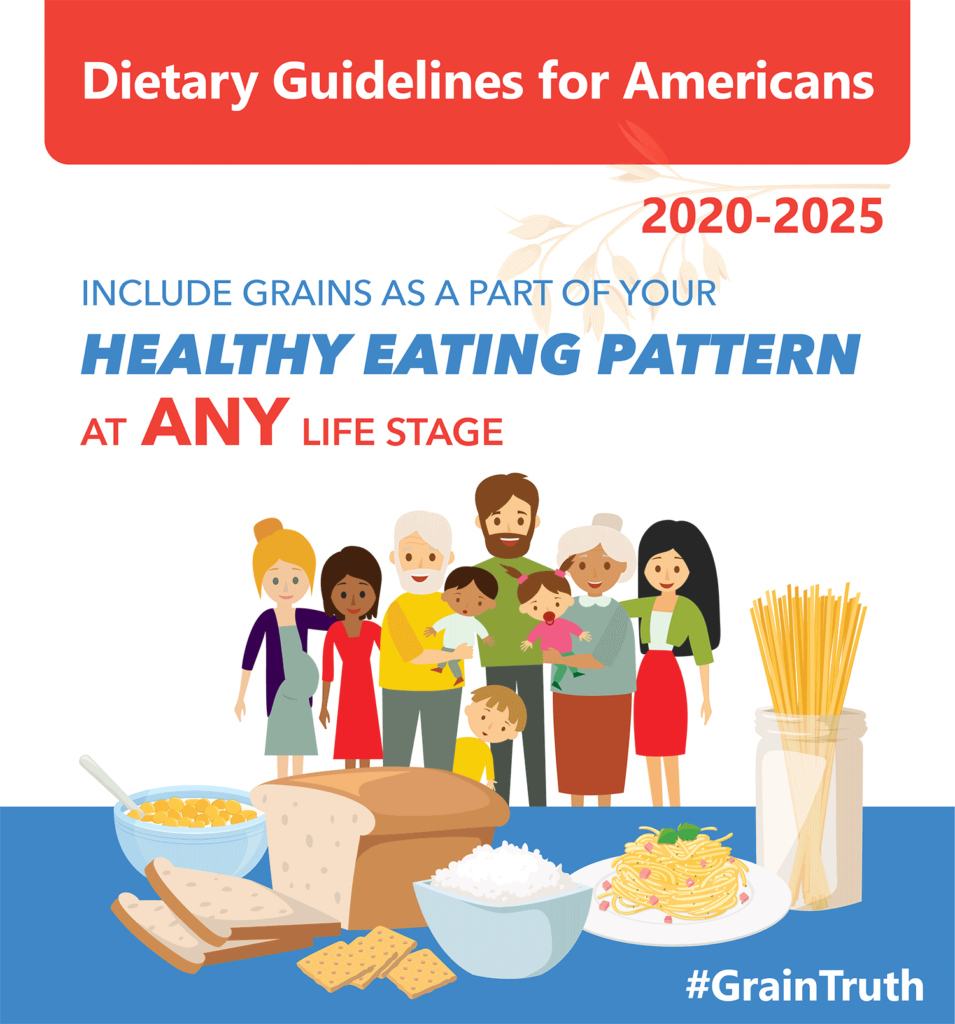The 2020-2025 Dietary Guidelines for Americans (DGAs) maintained the existing recommendation for the average healthy American adult to consume six one-ounce servings of grain foods daily, with half of those servings coming from whole grains.
Additionally, for the first time, the DGAs included recommendations for birth to two years, recognizing grains as one of the traditional, nutritious first foods for infants. Numerous research studies have demonstrated significant, positive effects of nutrient absorption, improved nutrition quality, and overall wellness from enriched grains at various life stages.
The key takeaways from the 2020-2025 Dietary Guidelines for Americans for the grains-based foods industry:
- Grains, both enriched and whole, play a key role in healthy dietary patterns and diet quality
- Grains are a significant contributor of dietary fiber, a generally under-consumed nutrient for Americans
- Grains contribute to overall diet quality through key essential nutrients
- Grains are a delicious, versatile, affordable, and sustainable plant-based food
- Enrichment and fortification of grains are key contributors to positive public health impacts
- Since folic acid fortification of enriched grain foods became required in 1998, the prevalence of babies born with neural tube defects (NTDs) has decreased by 35% in the U.S., leading the Centers for Disease Control & Prevention (CDC) to name folic acid fortification of enriched grains one of the top 10 public health achievements of the first decade of the 21st century
These DGAs included guidance on enriched grains, maintaining the existing recommendation of three one-ounce servings of enriched grains daily. While the guidelines cite science-backed evidence of positive health outcomes from the inclusion of enriched grains, the Grain Chain is extremely concerned to see the DGAs include contradictory language linking “refined grains” with poor dietary patterns and health outcomes.
[modula id=”286945″]

